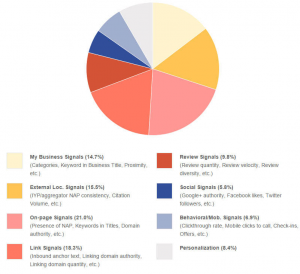— October 25, 2017

41330 / Pixabay
There is no simple formula for great leadership. With this in mind, it’s critical for companies to identify the skills and abilities they desire in a leader to help them properly recruit and train future managers and executives while helping existing ones improve.
To see what good leadership entails, let’s consider how senior staff and executives interact with employees and examine a key set of skills, both personal and professional, that can strengthen leadership.
Establish strong relationships
A common sentiment in workplaces, that “workers quit their bosses, not their jobs,” underscores the importance of management’s rapport with staff. Good leaders inspire and value the loyalty of their staff. It doesn’t take an expert to know that employees who feel micromanaged, underappreciated, and mistreated won’t bring their best selves to work.
In the words of senior HR specialist, Amy Marcum, “…if the work relationships are positive and motivating, employees will accept average wages and mundane or even highly stressful work. Without that relationship element, employees will have a wandering eye.”
With so many resources lost due to turnover and absenteeism, strong work relationships are critical to employee morale and a company’s bottom line. There are multiple ways for leaders to address common churn causes or prevent them altogether.
Leaders can give employees some autonomy over how they complete their projects; in other words, they can make a conscious choice to relinquish control and resist the urge to micromanage. When given some leeway, employees often find new and innovative ways to execute tasks for the benefit of the company.
Second, avoid using monetary incentives to drive productivity. Contrary to what many managers believe, an article in Psychology Today warns that it’s counterproductive. In fact, it advises that things like “job enjoyment” born from a sense of appreciation are effective at increasing employee performance. Only 13 percent of respondents in one of their studies cited monetary incentives as a motivator.
Some fundamentals bear repeating: it’s important that leaders show respect. Chastising employees in front of their peers or offering harsh or unjustified criticism will make any leader come across as a bully. By treating everyone with respect, leaders put themselves in positions of positive influence.
Understand employee needs
Every person has their own values, values that ultimately guide their decisions. Consequently, leaders often approach their roles according to the values that appeal to and motivate them.
An article in the Harvard Business Review says it best: “…[some leaders] tend to adopt policies and theories of human motivation that appeal to their own individual value systems, under the assumption that all employees have similar values.”
And therein lies the challenge. Simply put, not everyone wants the same thing. Leaders need to understand individual differences and adjust their decisions and policies to work for everyone.
The “Platinum Rule”
In our day-to-day dealings, we’re taught to follow the “Golden Rule.” While the Golden Rule works when we’re dealing with peers, family or the server who brought us the wrong order, it’s not effective when trying to keep staff engaged and happy.
In the same Harvard Business Review article, authors Vincent S. Flowers and Charles L. Hughes say: “If we were to write a Platinum Rule, we should say, ‘Do unto others as they would have you do unto them [emphasis theirs].’ This rule has obvious value for a manager who seeks to reinforce [the] right reasons for staying, at various value levels, and to avoid reinforcing wrong reasons.”
In other words, leaders need to know what attracts or repels staff to their company. However, identifying these elements isn’t a simple process. In order to treat others the way they’d want you to treat them, you need to gather some information.
Flowers and Hughes recommend looking at trends within the company, such as why employees stay, what their personal values are in terms of work and ethics; demographic information; and satisfaction levels. When armed with these data points, managers can make progressive changes that are informed by their team.
As Flowers and Hughes explain, “If management wants employees to stay for reasons that are right for the individual, the corporation, and the society, it must develop existentially managed organizations that truly accept and respect people with differing values.”
The point is that, in the above issue, organizations need to put less emphasis on conformity and focus more on diversity.
Possess the appropriate “hard” and “soft” skills
Performing any job well requires the proper skillset. What general abilities does a strong leader need? Let’s examine the “hard skills” and “soft skills” to which leaders often attribute their success.
Hard skills
Hard skills vary from one industry to another, but one nearly universal aspect is that hard skills are teachable. Education and experience are keys to learning new hard skills and honing existing ones.
However, given that fields and organizations require vastly different hard skills — just consider the disparity between a teacher’s hard skills and an iron worker’s — there’s not a one-size-fits-all list. Let’s discuss two of the most universal hard skills for leadership.
1. Project management
Project management is one critical skill all good leaders need, according to Tricia Hussung of Concordia University. Project management is the ability to oversee “complex projects” and ensure that a team is led properly.
Aside from assigning key tasks, project management also involves putting out the proverbial fires that inevitably arise, like technical issues, deadline changes, and staff shortages, to name a few. Great project managers can successfully mediate conflicts between team members, identifying and addressing differing opinions on how to best approach the task at hand.
A good leader also knows how to provide clear direction. She has a goal in mind and knows exactly which milestones need to be reached in order to reach that goal. Great leaders fully understand the task at hand, knowing that vague and confusing guidelines can lead to errors or poor quality. In the event of failure, great leaders know when to take the blame.
Finally, managers need to make themselves available for any questions or concerns their staff may have. It’s important for leaders to mitigate any reservations that individuals have about requesting help or asking what they may feel are stupid questions.
A good way to provide reassurance is to say “that’s a great question. Let me clarify that for you.” This tactful response validates the person’s inquiry while showing that you are happy to address it.
In short, a leader has to have a clear vision on how to achieve the team’s goal, delegate tasks accordingly, be adaptable to sudden problems, provide supportive guidance, and ensure cohesion.
2. Technology management
Technology management is the second hard skill Hussung identifies as vital for great leaders. “Understanding the connection between business and technology is one of the best ways to advance in your career,” she explains.
In other words, it’s important to keep up with the latest technological trends affecting businesses. We’re all very much aware of how quickly advances happen in this sphere. Software as a service (SaaS) is an invaluable resource that savvy leaders implement to streamline and improve various day-to-day functions.
By staying abreast of developments in the industry and the latest product releases, great leaders learn to identify tremendous opportunities to improve efficiency and increase productivity.
Building a technology management skillset requires consistent research and an understanding of how software can propel business objectives forward. Strong leaders work constantly to identify bottlenecks, redundancies, and inefficiencies and consider how technology can solve those problems.
For instance, cloud-based programs like Slack, Stride, Dropbox, and the Adobe Creative Suite are accessible from anywhere with an internet connection. Greater accessibility to software dramatically reduces the overhead required to upgrade and maintain internal software. Cloud-based tools also allows employees to work remotely, giving them the option to work from home.
When leaders recognize the positive impact that software can have on their teams, they can fundamentally improve their employees’ working experiences. Other SaaS software, like Zenefits and Gusto, centralizes HR functions so that employees can manage their own time off requests, saving management the time and hassle of having to approve each one individually.
Leaders who actively focus on technology management are engaged with their employees’ needs and dedicated to improving their day-to-day experience. A leader who can identify these areas of opportunity and implement technology accordingly is a huge asset to any organization.
Soft skills
While hard skills focused on knowledge and abilities specific to the tasks at hand are critical to job success, they are only the entry requirements of leadership.
Soft skills, which focus on the interpersonal aspects of working within an organization, are critical to ongoing success as a member of that organization.
Unlike hard skills, which are often specific to a certain job or profession, most soft skills are transferrable across different positions, organizations, and industries. Let’s take look at some common examples and the role they play in good leadership.
Communication
Effective communication skills are crucial in any work environment, but this is especially true for those in leadership positions. A recent Gallup News article by Jim Harder and Amy Adkins discussed results from studies dating all the way back to the year 2000 — each of which corroborated this basic premise:
Communication is the foundation of a successful working relationship between leaders and their teams.
Gallup’s research showed that employees who communicate regularly with their supervisors are more engaged, stating that “…employees whose managers hold regular meetings with them are almost three times as likely to be engaged as employees whose managers do not hold regular meetings with them.”
Furthermore, Gallup also found that “…engagement is highest among employees who have some form (face to face, phone or digital) of daily communication with their managers.”
As trusted mentors and facilitators, it is the duty of managers and leaders to communicate regularly with their teams; not just for the benefit of those team members, but for the organization as a whole.
Emotional intelligence
The Harvard Business Review lists emotional intelligence (EQ) as a critical soft skill; however, it’s important to understand that “emotional intelligence” is not a single skill, but an umbrella term descriptive of multiple sub-skills.
HBR lists these as
- Self-awareness
- Self-regulation
- Motivation
- Empathy
- Social skills
Emotionally intelligent leaders are cognizant of the impact and implications of their attitudes and actions, eager to perform, empathetic, considerate of others’ feelings, and generally pleasant to deal with.
That may sound like a challenging set of skills to develop, but the return on that investment is often dramatic and worth the effort.
Appreciation
Lou Solomon’s Harvard Business Review article “The Top Complaints from Employees About Their Leaders” points to an Interact/Harris poll of 1,000 U.S. workers that breaks down some top complaints about leaders they perceive as poor.
A shocking 63 percent of respondents felt that lack of recognition is the biggest problem.
A good leader gives credit where credit is due. More importantly, he or she proactively thanks staff for their work, and does it in a way that helps them to understand why the work they did was valuable and appreciated.
A simple “good job” or “thank you” — either in public or during a coaching session — is better than nothing, but it’s not enough to inspire motivation and engagement.
When showing appreciation, make sure you’re zeroing in on exactly what it is about their contribution that you appreciate, and make it clear. Here’s a quick example to illustrate this point:
Acceptable: “Great job on that presentation, Fatima.”
Much better: “Great job on that presentation, Fatima. Your attention to detail really showed, and our clients let me know how impressed they were by it. Delighting our clients has always been the key to our success as an organization, and you did an amazing job of that today.”
In the first example, Fatima learns that her work was “good” and appreciated, but not why it was good. In the second example, she learns exactly what she did that garnered praise, and why it was important to her team, her organization, and its clients in the outside world.
It’s also important for that recognition to be shown in the moment, before its impact has a chance to fade.
Clarity
Second on the list of complaints, at 57 percent, is the issue of directions.
When employees receive a task or project, they need to know how to do it. If they become confused due to poor direction, they’ll blame the person who assigned them the work—and they won’t be wrong.
Great leaders articulate what needs to be done, what the metrics for success look like, and know how they can best support their team in accomplishing their shared goals.
Constructive criticism
Giving criticism can be one of the most challenging aspects of leadership, but it’s necessary in order to improve performance.
Employees need to, and often want to know where they excel and where they have room for improvement. They keys to delivering this feedback and constructive criticism are tact and empathy.
Harsh criticism (or none at all) does nothing to help, a sentiment held by 39 percent of the workers surveyed.
In this case, delivery and wording are crucial. Telling a staff member that their performance is lacking should be framed in a way that reflects a desire to help, not lecture.
For instance, a proper way to phrase feedback would be: “Let’s see what we can do to get this project back on track and meet the deadline.”
It isn’t accusatory or punitive, and it sends a message that everyone is on the same side, working toward the same goals. As a result, an employee is much more likely to take the feedback seriously without feeling offended or defensive.
Social interaction
Although the connection between positive social interactions and your bottom line may not seem obvious, it’s one of the most fundamental elements of your job as a leader.
Although a managerial relationship is often quite different from a friendship outside the confines of the office, it’s to everyone’s advantage to take an interest in your colleagues’ wellbeing outside of work. In fact, 23 percent of poll respondents agreed on the importance of a leader showing interest in employees’ lives outside of work.
Taking those few minutes to catch up with team members in an informal setting isn’t only useful in developing a more enjoyable relationship; it can also provide a crucial window into their motivations, their aspirations, and their values.
In conclusion
Being a bad boss is easy, but being a great leader requires strong analytical skills with a good balance of learned abilities and social aptitude.
With that in mind, it’s important to study and embody the elements of great leadership. Doing so will help to provide greater efficiency, higher morale, stronger engagement and lower turnover across your team, giving your organization a major competitive advantage, and making work better for everyone along the way.
Business & Finance Articles on Business 2 Community
(87)
Report Post







